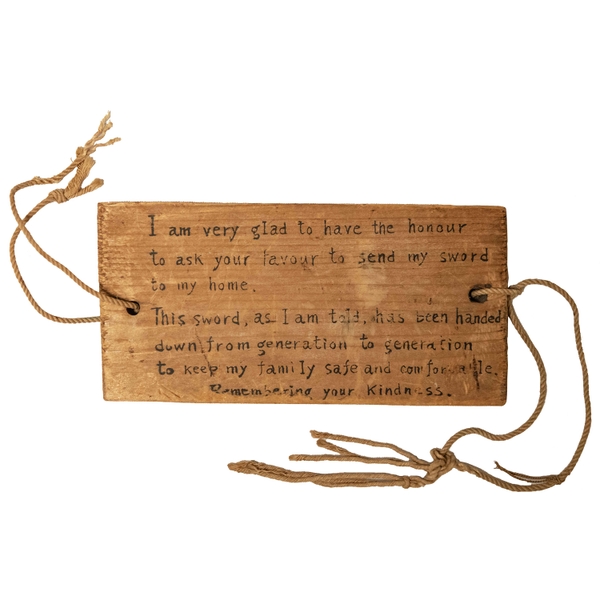My Quest to Find the Owner of a Mysterious WWII Japanese Sword
When I was a kid, I was fascinated by a traditional katana my grandfather had brought home from Japan in 1945. Years later, I decided it was time to find the heirloom’s rightful owner.
New perk: Easily find new routes and hidden gems, upcoming running events, and more near you. Your weekly Local Running Newsletter has everything you need to lace up! Subscribe today.
I. Two Sides of a Single-Edged Blade
Franklin Park, Illinois, December 25, 2021
The sword was suspended in the basement rafters with a message from 1945 still secured to its fittings. My grandfather and I were sitting one floor above it at his kitchen table when an email arrived. It was 9:17 A.M. on Christmas Day in 2021, the Chicago weather too mild, the ground too much of a defeated brown, and the gathering too small to suggest that anything festive was about to happen. A notification lit up my phone with the subject line “Merry Christmas and a letter from Umeki-san.”
The timing was convenient. I was visiting for the holidays, staying at my mother’s childhood home in Franklin Park, ten miles west of Chicago. My parents were there, too. My grandfather, Joseph Kasser, who goes by Ben or Benny, built the home in 1957 for a family of four that eventually dwindled to one. My mom, Kathy, was the first to go, leaving for college in 1971; my grandma Alice died in 2008; my uncle Bob died in 2010. They left Benny alone on Louis Street with a lifetime of modest possessions. Among them was a Japanese sword he’d found on an Okinawa beach in the final days of World War II.
It was six months after I first asked Benny if he’d be interested in finding the sword’s owner. I don’t remember what I said to start the conversation. I do remember that I was nervous asking a man who doesn’t own much to part ways with a keepsake he’d found during perhaps the most consequential time of his life as an antiaircraft gunner in the U.S. Army. He didn’t hesitate. He said, “Sure.”
It was one of those inspired “sure”s that really mean “absolutely,” a posture-correcting “sure,” an energy-intoned “sure,” not “I suppose” or “if you want.” A momentous syllable that set something off. It was apparently something he had considered.
Now, on Christmas Day, I didn’t know if the email that had arrived contained good news about our quest. I read it silently while sitting at the kitchen table, where I had heard one side of the story for more than three decades.

















